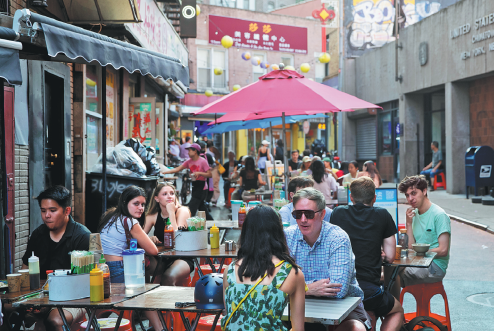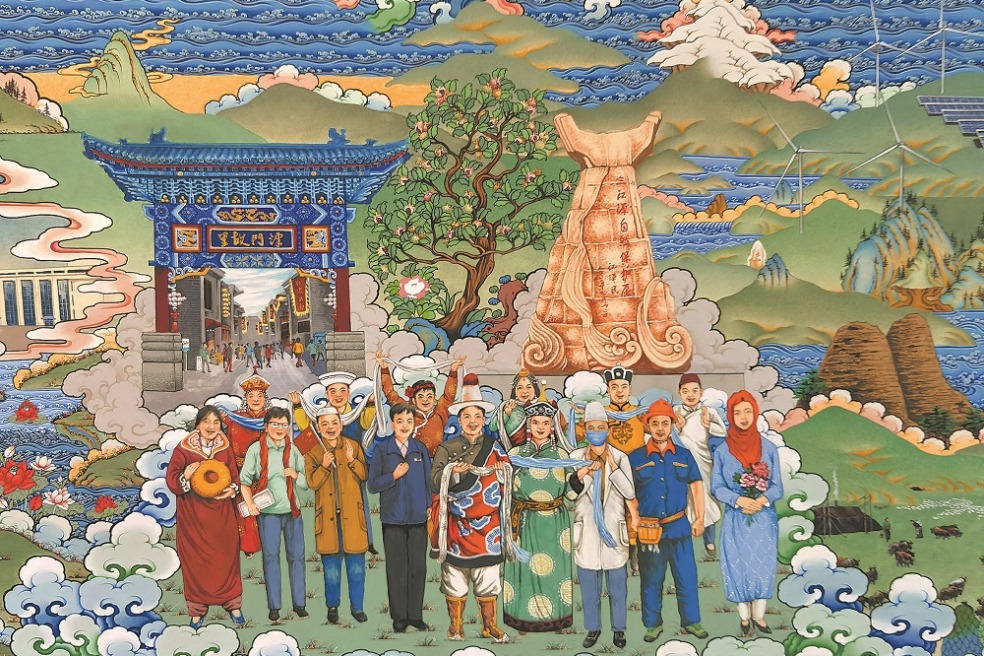Chinese restaurants to cook up new ideas in US
Experts emphasize innovating while enhancing ambiance and service for diners

Across the United States' diverse culinary landscape, there are nearly 100,000 Asian restaurants, with Chinese cuisine being prominent.
Despite the popularity of Chinese food — featured on 39 percent of menus at Asian restaurants — leaders in the Chinese catering industry are calling for a shift in focus.
At a recent industry meeting, experts emphasized that while taste remains crucial, the future success of Chinese restaurants in the US hinges on enhancing the overall dining experience.
Amy Duan, founder of Chihuo and the Taste of Asia event, stressed that thriving in the competitive US market requires more than just flavor; it demands an investment in ambiance, service and cultural storytelling.
"Food is the language that (means) you like people — there's no politics, no barriers … everyone enjoys the beauty of good food," Duan told China Daily at a North American Asian food industry conference and exhibition in Los Angeles.
Hundreds of people in the catering industry attended the conference to discuss franchise models, marketing and brands, localization strategies and supply chains.
As US consumers increasingly seek authentic, globally influenced culinary experiences, Chinese restaurant owners are encouraged to adapt and innovate, learning from successful US chain models like McDonald's and Burger King, to build a loyal and diverse customer base, Duan said.
Chinese cuisine is renowned for its rich and varied flavors, yet Westerners might not fully appreciate the intricate techniques and cultural significance of its preparation.
Many Chinese dishes in the US have been adapted to suit diners' tastes, often resulting in a sweeter, less complex flavor profile. That has led to Americanized Chinese food becoming the primary representation of the cuisine.
'Feeling lonely'
"Most Chinese restaurants feel lonely. They don't know if it's the best way to do business in America or how to promote Asian food culture there," Duan said.
While discussing the global expansion of a restaurant chain, industry leaders emphasized the importance of understanding local markets, adapting to customer preferences and overcoming cultural barriers.
Zhao Yong, president of the Asian American Hospitality Alliance, highlighted the challenges facing Chinese cuisine in the US, describing the industry as being in a "red ocean" state — saturated with competition but lacking in cohesive strategy.
He said there are three main problems — low prices leading to a decline in quality, a lack of standardization and the use of cheap labor, which hinders the industry's growth and potential for public recognition.
"For example, a small US town with a population of 20,000 will soon have 10 Chinese restaurants there, more than McDonald's, but everyone is undercutting prices and prices can't go any lower. This has been the traditional expansion method for Chinese restaurants in the US that compete against each other," Zhao said.
To address these issues, Zhao suggested creating national Chinese food festivals, such as Hot Pot Day or Soup Dumpling Day, to promote culinary brands and encourage investment in the Chinese food supply chain.
Such efforts would raise the profile of Chinese cuisine, he said.
However, some experts express doubts about introducing too much of the original culture to the US market.
Cervantes Lee, a professor of hospitality at the University of Nevada, Las Vegas, said that while authenticity is important, it's crucial to respect local customs and culture.
"The business should be managed by a team familiar with the local market and the food must be adapted to suit local tastes," Lee said.
"It's important not to assume that Americans will immediately appreciate our authentic dishes," Duan said.
For Asian restaurants in the US, the focus is often on delivering the best flavors. However, US customers seek more than just good food. They are drawn to the overall atmosphere — classic, upscale or casual — and the story behind the restaurant.
Service is also crucial, as dining out is about enjoying a complete experience, a point emphasized by industry insiders.
"Unfortunately, many Asian or Chinese restaurateurs tend to overlook the importance of environment, vibe and service, concentrating solely on taste, which isn't enough to satisfy American diners," Duan said.
Still, Chinese, Korean, Japanese and Thai restaurants are increasingly included on Michelin's list in recent years, becoming popular in the US partly due to adapting their offerings to local palates.
"This approach contrasts with copying menus from their home countries and trying to sell them to non-native audiences," Duan added.
If the greatest challenge to Chinese restaurants is preserving the traditional flavors and cultural heritage of their cuisine while adapting to US tastes and building a loyal customer base, then Lao Sze Chuan in Chicago has achieved both.
Former mayor of Chicago Rahm Emanuel is a loyal customer, often bringing his wife and son to dine there. Emanuel's favorite dish is the dry chili chicken, which is recognized by the Chicago Tribune newspaper as a landmark dish of the city. His wife favors the sweet lemon crispy shrimp, contrasting her husband's spicy preference, while their son enjoys the dry-fried string beans with tofu.
Meanwhile, at the Lao Sze Chuan branch in Washington, DC, former cabinet secretary Elaine Chao can be found savoring Peking duck.
Founded in Chicago in 1998 by Tony Hu, also known as Chef Tony, the upscale Chinese restaurant has become more than just another pepper steak spot.
Discovering flavors
"We divide the menu into four sections to cater to different tastes and preferences," Hu told China Daily.
The menu is divided into traditional hometown dishes for older Chinese immigrants, popular spicy hot pot dishes for young people and international students, American Chinese cuisine like sesame chicken with a unique twist, and innovative creations such as lemon crispy shrimp.
"Eighty percent of our customers are Americans; many discover flavors to enjoy for a lifetime," Hu said.
Lao Sze Chuan's 16 branches across the US, with eight more in the planning stages, have become a destination dining experience in cities like Chicago, Washington, DC, and Houston and the states of Minnesota, Connecticut and Ohio.
"We offer over 20 brand-specific dishes and are continuously developing more," Hu added. "We welcome local partners to join us."
Lao Sze Chuan has received numerous accolades over the years, including being named the No 1 Chinese restaurant and top takeout restaurant by The Daily Meal, a food and drinks website. The restaurant has also been featured as one of the best Chinese restaurants on the Thrillist website and in Time Out magazine and has earned the Michelin Bib Gourmand Award seven times in a row.
By sharing the stories behind Chinese cuisine with local communities and universities, the chef and his restaurant have attracted significant mainstream media attention.
"Chinese restaurants need to learn to speak up — it's not enough to just do things well," said Duan. "Chinese cuisine has so many good ingredients and stories to tell. We are telling the story of the entire Asian community, not just food."




Today's Top News
- Rise of macro-regions and dollar's decline
- Training helps to empower Global South
- Country to cut costs of preschool education
- Pakistani minister hails high-tech ties with China
- China-US trade ties key for world economy
- Prospering Xizang sees surge in overseas visitors































